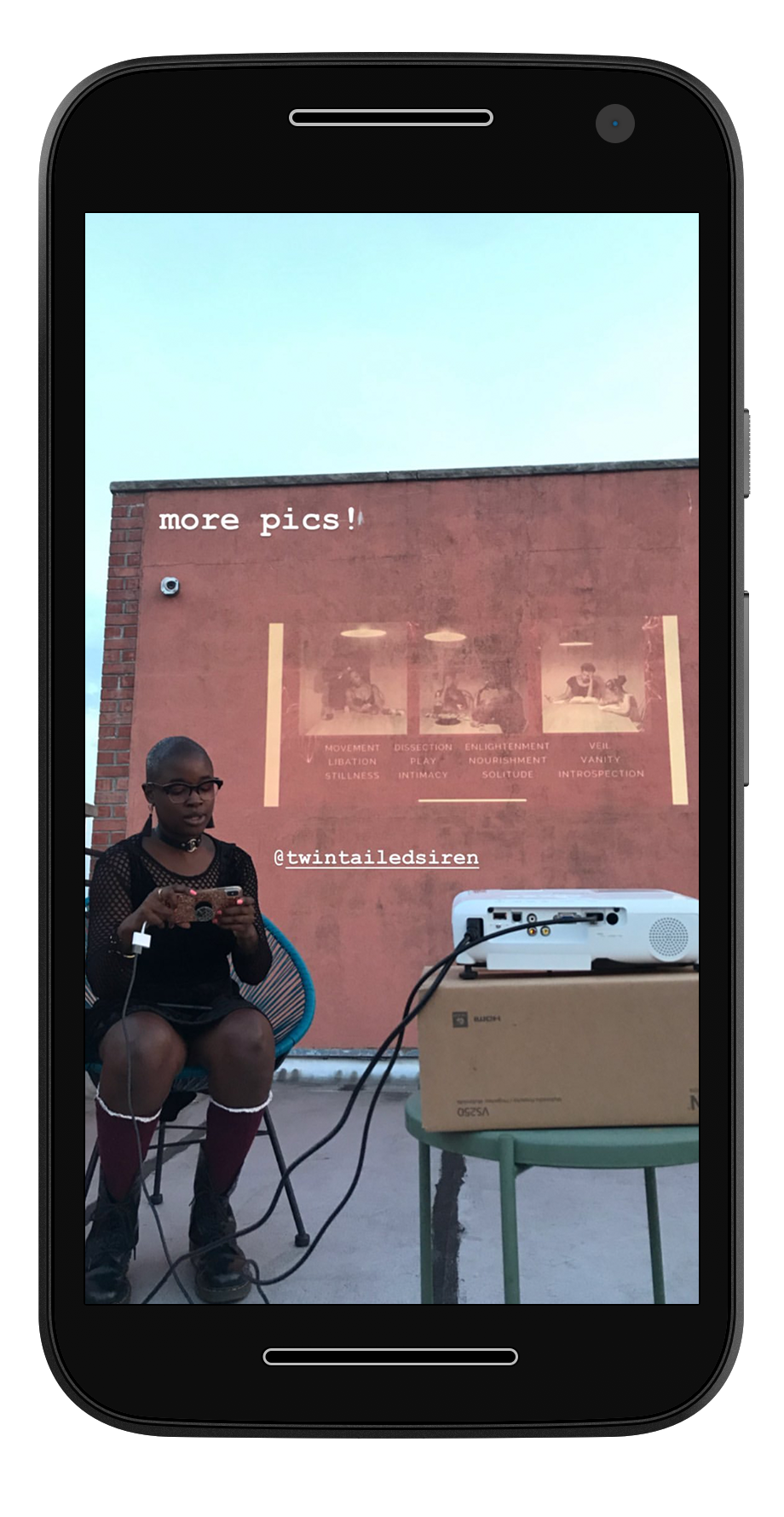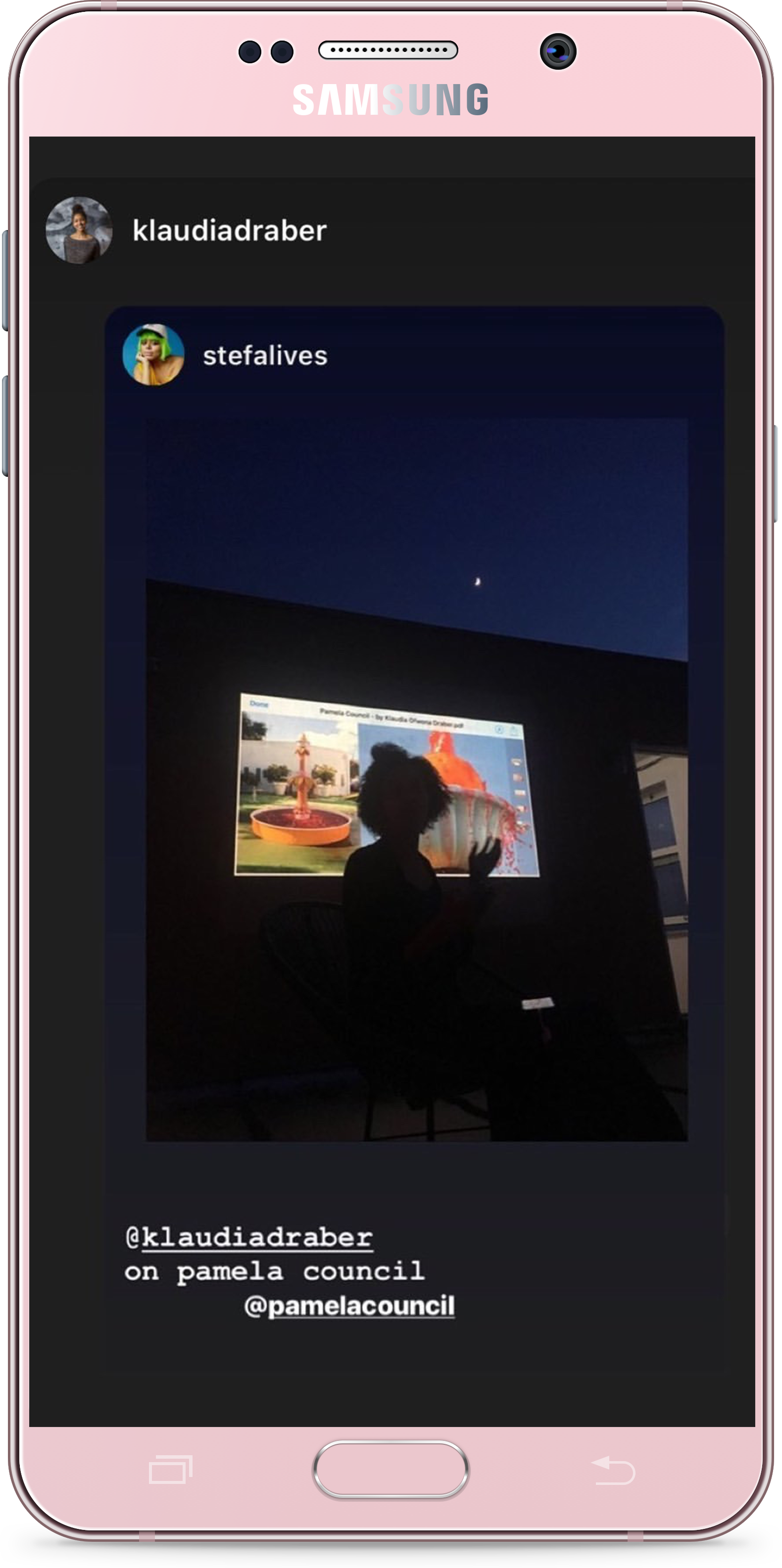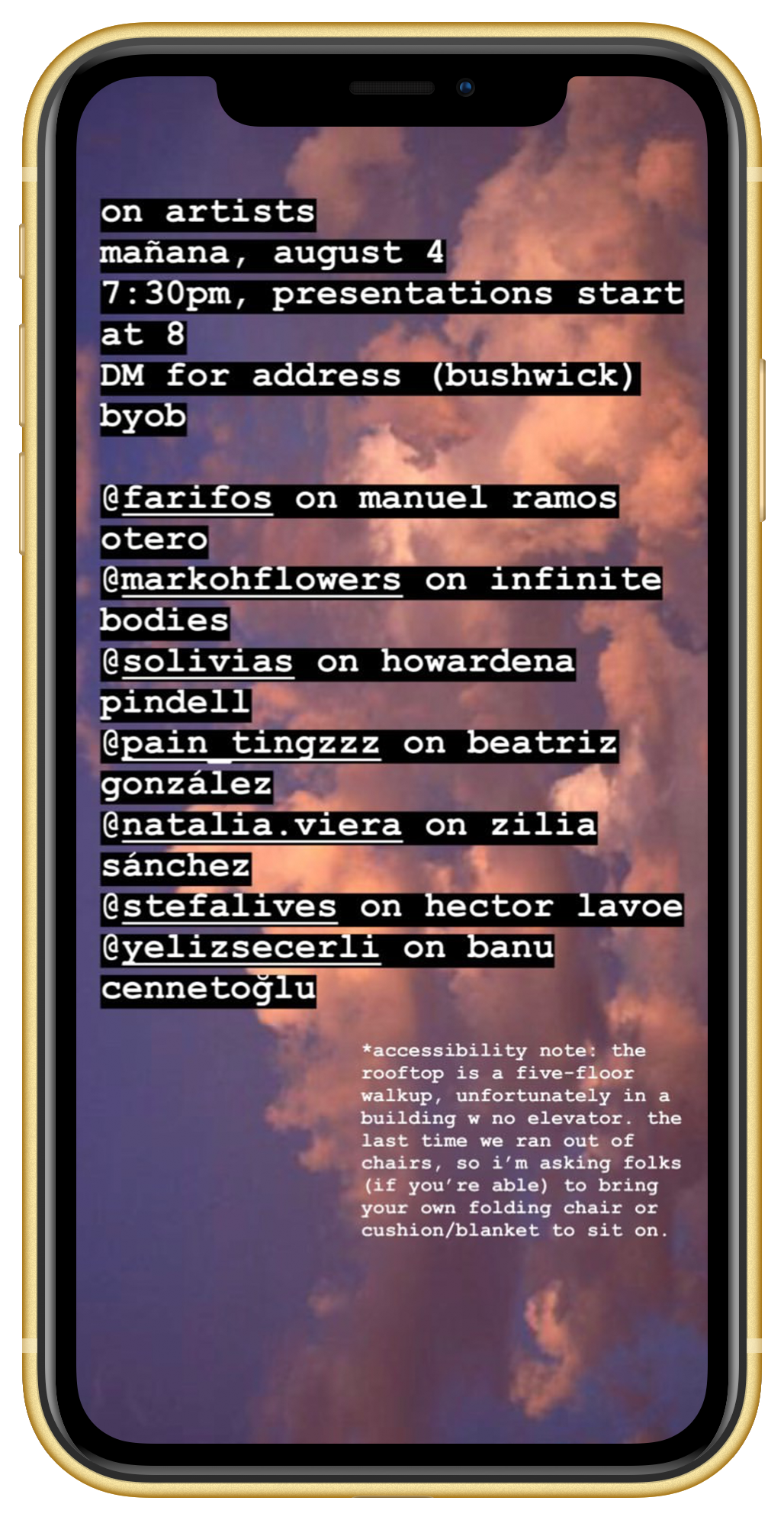Spiral Time, curatorial project commissioned by Smack Mellon (2024). The exhibition includes work by Zainab Aliyu, Cali M. Banks, Rhea Barve, Cinthya Santos Briones, Anastasia Corrine, Christian Amaya Garcia, dre jácome, Ruth Jeyaveeran, Natalia Mejía Murillo, G. Rosa-Rey.
Spiral Time explores radical ecologies of resistance that challenge the temporal pressures imposed by capitalism. Decentering speed and efficiency, the artists included in the exhibition borrow from slow, careful, and intentional practices like seedkeeping, intergenerational storytelling, and synchronic experimentation. Working across sculpture, installation, video, and other media, the artists engage broadly with the dire concerns of the climate catastrophe while invoking cyclical ancestral systems and future possibilities for horizontal relationships to the Earth. Ultimately, the resonance of their distinct voices provides a framework for reciprocity, undermining the dominant systems of capitalist logic that impose notions of progress as singular, linear, and unidirectional. Spiral Time is, after all, about diffraction and dispersion in the face of methodical, exhausting, and often violent order.
Spiral Time explores radical ecologies of resistance that challenge the temporal pressures imposed by capitalism. Decentering speed and efficiency, the artists included in the exhibition borrow from slow, careful, and intentional practices like seedkeeping, intergenerational storytelling, and synchronic experimentation. Working across sculpture, installation, video, and other media, the artists engage broadly with the dire concerns of the climate catastrophe while invoking cyclical ancestral systems and future possibilities for horizontal relationships to the Earth. Ultimately, the resonance of their distinct voices provides a framework for reciprocity, undermining the dominant systems of capitalist logic that impose notions of progress as singular, linear, and unidirectional. Spiral Time is, after all, about diffraction and dispersion in the face of methodical, exhausting, and often violent order.
Referencing the groundbreaking theory of Brazilian poet and scholar Leda Maria Martins, Spiral Time expands upon her assertion that time is recurrent, communicated across generations through embodied practices like performance, dance, and music. In contrast with the ways time is often used as an instrument of control in Western society, embodied knowledge that travels intergenerationally can be transmitted in spite of colonial violence and dispossession. The body is a site for inscribed knowledge and memory that can be disseminated endlessly, bridging past and future through the present. The artists of Spiral Time employ slowness, observation, intervention, recordkeeping, and speculative imagination as decolonial strategies. Much like a seed germinating in soil, which at first glance appears lifeless, over time, these strategies catalyze the growth of something much larger than what immediately meets the eye.
Special Thanks: Rachel Vera Steinberg, Javier Maria, John Fleming, Grimaldi Baez, Charles O’Leary, Kathleen Gilrain. Images courtesy of Smack Mellon. Photos by Etienne Frossard.
Special Thanks: Rachel Vera Steinberg, Javier Maria, John Fleming, Grimaldi Baez, Charles O’Leary, Kathleen Gilrain. Images courtesy of Smack Mellon. Photos by Etienne Frossard.












Behind the Cloud, co-curated with Marissa Del Toro, a curatorial project commissioned by The Latinx Project at NYU (2023). The exhibition included work by Dennis Delgado, Steffi Faircloth, Liliana Farber, Adán De La Garza, Jezabeth Roca Gonzalez, Bahareh Khoshooee, Michael Menchaca, Dan Paz & Aviva Avnisan, RaFia Santana.
Artificial intelligence, surveillance mechanisms, and communications infrastructures contour the essence of our world and how we experience daily life. Often made invisible, as if they were always naturalized aspects of our collective existence, these technologies inevitably inform the way we present ourselves, engage with others, and view the world beyond our immediate vicinity. In Behind the Cloud, artists explore our relationships with digital technologies and interrogate various systems of control through a wide array of media: programming software, crowdfunding sites, video, photography, algorithms, sculpture, printmaking, and social media.
Artificial intelligence, surveillance mechanisms, and communications infrastructures contour the essence of our world and how we experience daily life. Often made invisible, as if they were always naturalized aspects of our collective existence, these technologies inevitably inform the way we present ourselves, engage with others, and view the world beyond our immediate vicinity. In Behind the Cloud, artists explore our relationships with digital technologies and interrogate various systems of control through a wide array of media: programming software, crowdfunding sites, video, photography, algorithms, sculpture, printmaking, and social media.
In our age of information, corporations and government bodies fuel their empires through data mining and collection in order to keep tabs on citizens and target them with algorithmic advertising. The artists in Behind the Cloud examine, in divergent ways, how these technologies feel omnipresent and an inescapable byproduct of participating in everyday life. They also underscore how these technologies work in tandem with the agendas of corporations, governments, and other systems of control. These artists offer an awareness of the system we exist in while encouraging us as viewers to question, delve deeper, and activate our own individual and collective responses.
Special Thanks: Francesco Gattuso, Jessy V. Castillo, Marcel Rosa-Salas, Xavier Robles Armas, Nikki Myers, Jessica Enriquez, Orlando Ochoa, Néstor David Pastor, Arlene Dávila
Special Thanks: Francesco Gattuso, Jessy V. Castillo, Marcel Rosa-Salas, Xavier Robles Armas, Nikki Myers, Jessica Enriquez, Orlando Ochoa, Néstor David Pastor, Arlene Dávila











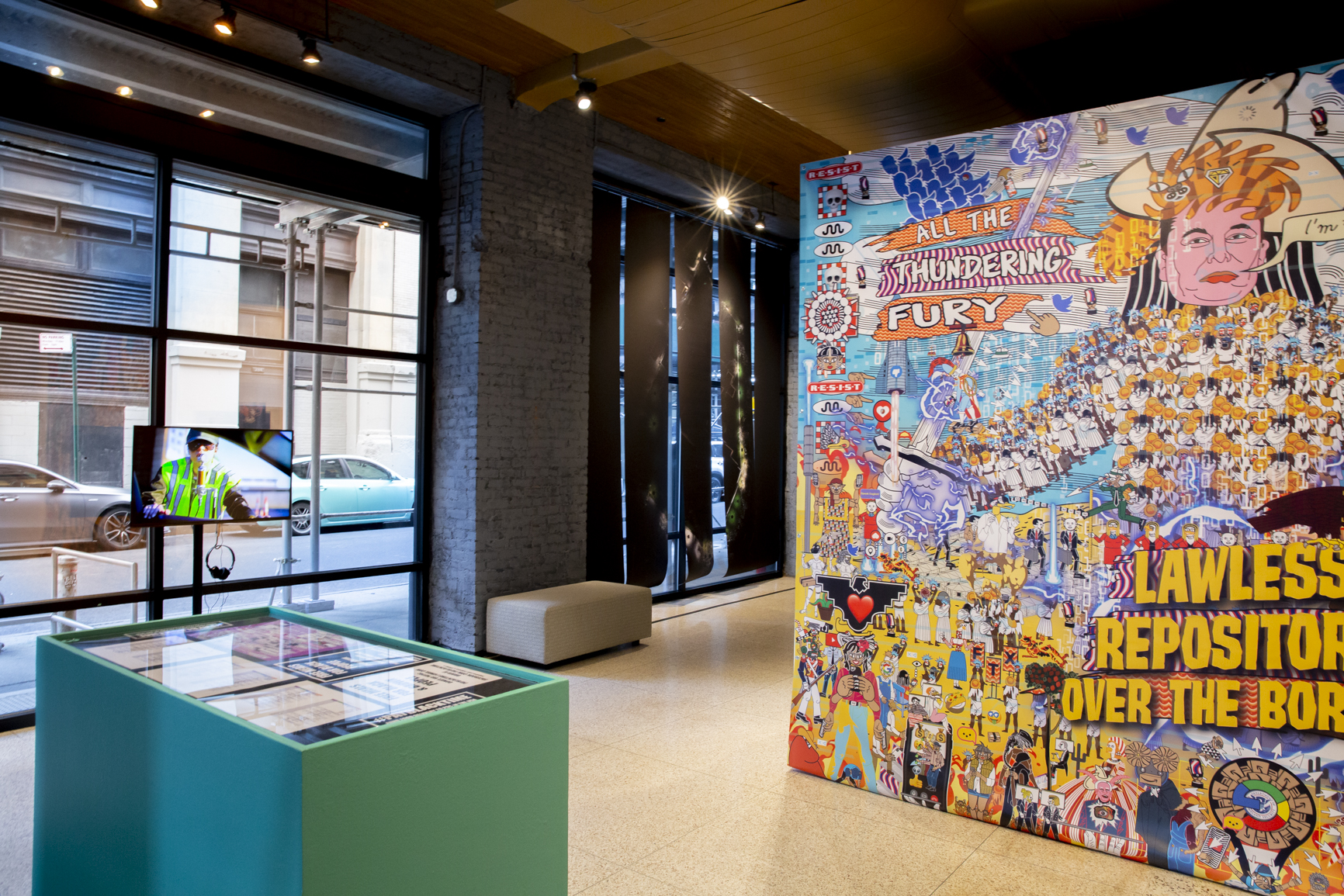


Morir Soñando, curatorial project commisioned by Knockdown Center (2018). The exhibition included work by Penn Eastburn, Valery Jung Estabrook, Hein Koh, Joiri Minaya, Kristianne Molina, Onel Naar, Esther Ruiz, Cristina Tufiño and Woolpunk.
The show borrows its name from the popular Dominican beverage, which quite literally translates into the expression “to die dreaming.” A frothy iced delight made from fresh orange juice and cold milk, morir soñando resists easy preparation and consumption. If not made at the proper temperature or mixed incorrectly, the milk can curdle from the acidity of the orange juice. The process of making the drink is a careful choreography that unites two unlikely ingredients in delicious harmony.
The show borrows its name from the popular Dominican beverage, which quite literally translates into the expression “to die dreaming.” A frothy iced delight made from fresh orange juice and cold milk, morir soñando resists easy preparation and consumption. If not made at the proper temperature or mixed incorrectly, the milk can curdle from the acidity of the orange juice. The process of making the drink is a careful choreography that unites two unlikely ingredients in delicious harmony.
The delicate process of making morir soñandos
functions metaphorically to establish relationships
between the artists’ diverse use of materials and
social commentary. Working across painting, sculpture, textile, and video, the artists address subjects like racial tensions, gender-based violence,
neocolonial trauma, and environmental concerns,
but do so in subtle ways informed by their material
engagement. Within the work, fluid lines, pastel
colors, and velvety textures are formal cues that
ultimately help articulate the potential of radical
vulnerability to become a tool for liberation. Firmly
grounded in the site-specificity of New York City—a metropolis defined by ongoing cultural exchange
and migrations—Morir Soñando is a Caribbean reference that alludes to perspectives far more nuanced
than those contained within any single diaspora.
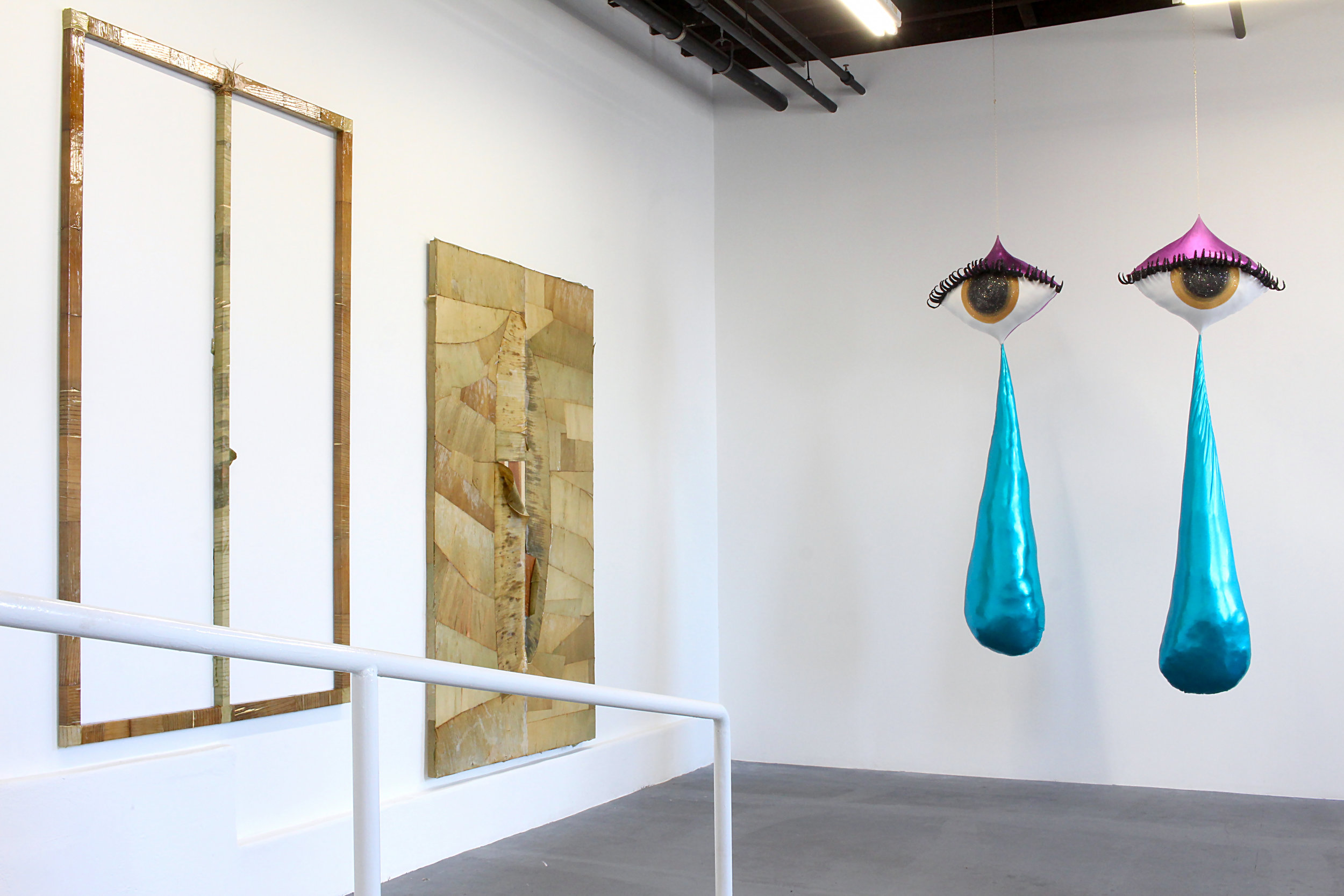



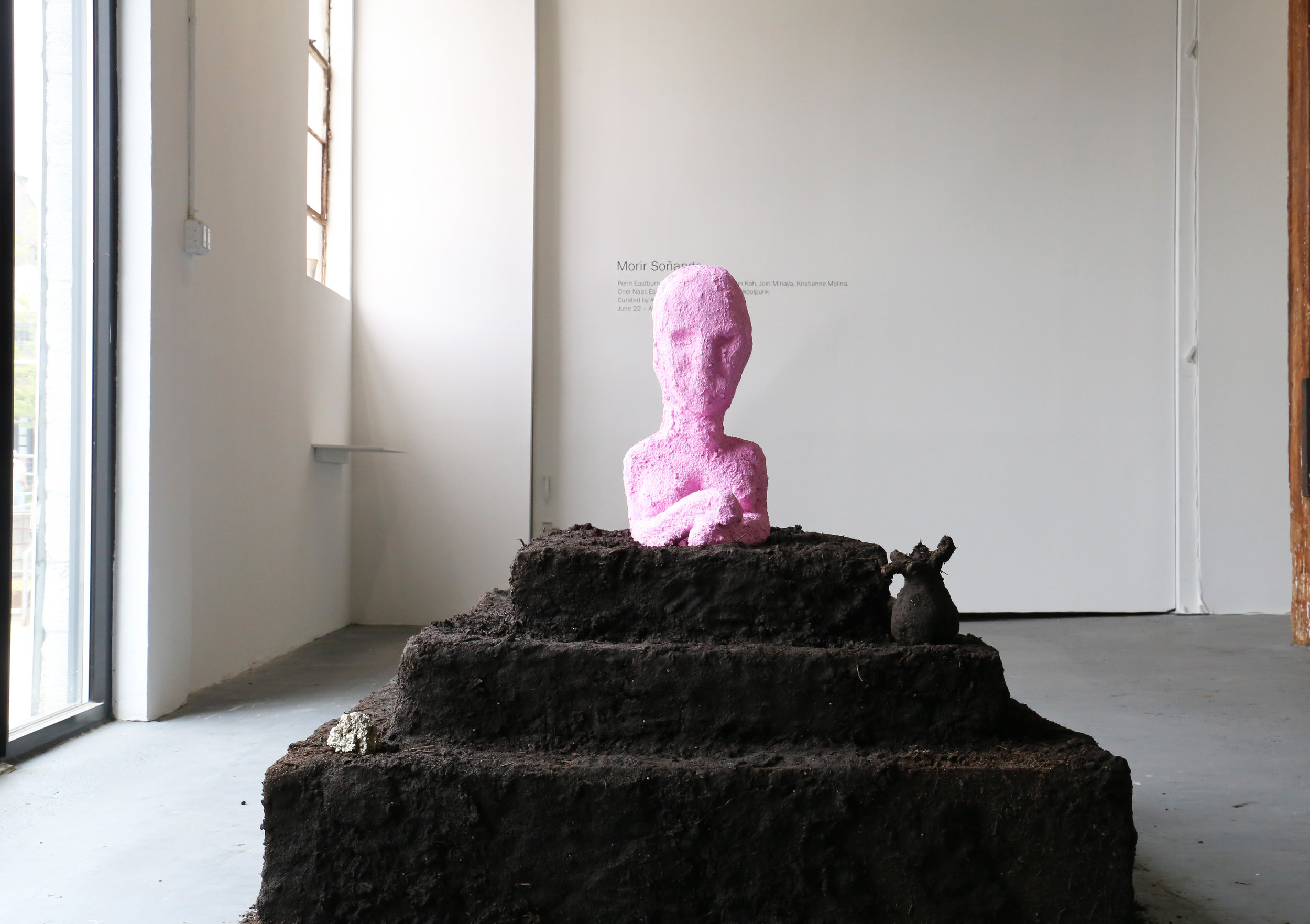

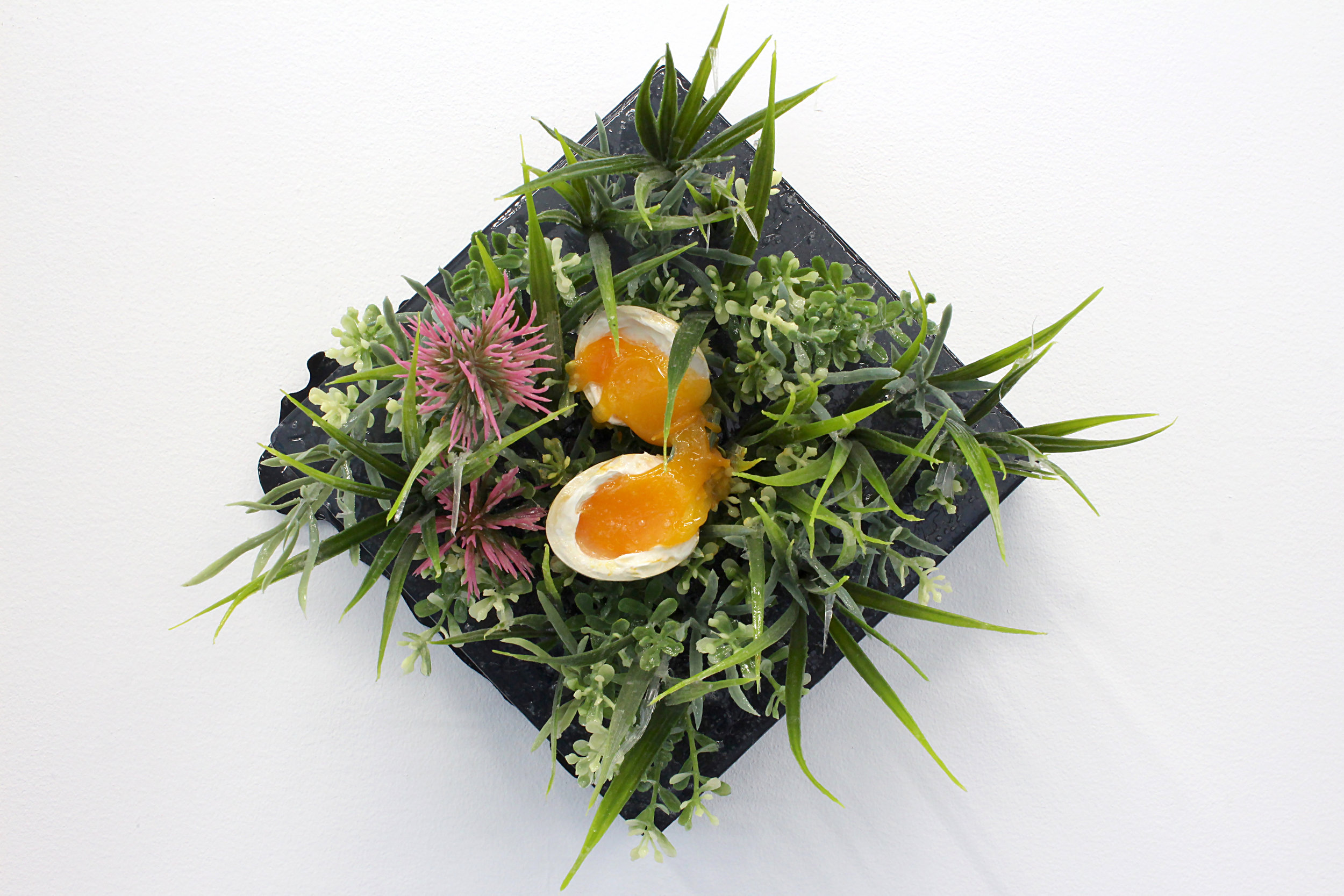




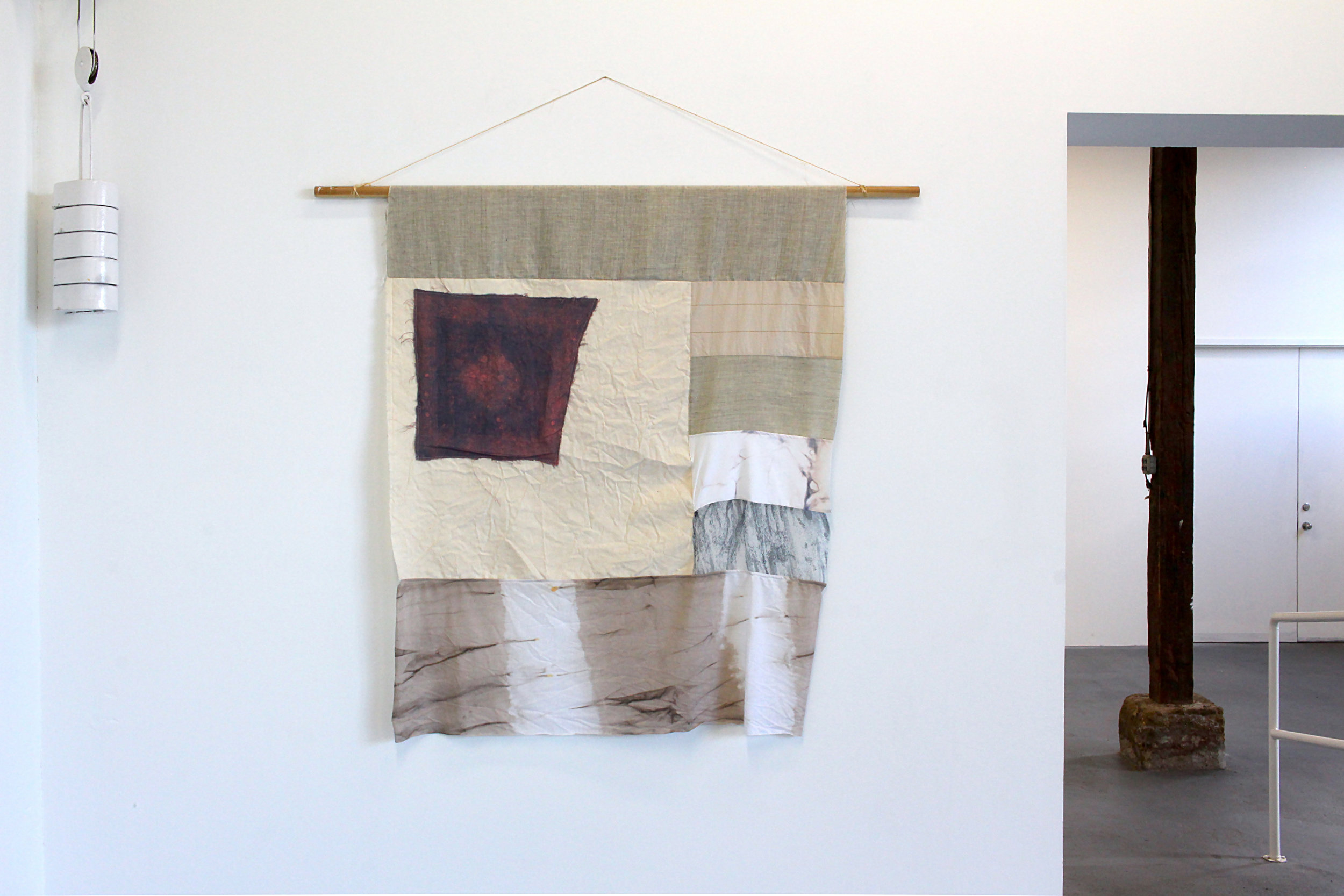
Summer Series: Artists on Artists
Summer Series was a monthly series of presentations on a rooftop in Brooklyn during the summer of 2019. Using Instragram to call upon artists, curators, and diverse practioners within and outside of the field, people came together to present mini art-historical lectures to an audience of peers. In an intimate environment, connecting phones to a projector, participants spoke earnestly about their favorite artists and how certain artworks have changed their lives.
Special Thanks: Kofi & Good Life Community Garden in Bushwick
Special Thanks: Kofi & Good Life Community Garden in Bushwick
Participants:
Alyssa Alexander | Xavier Robles Armas | Kate DaRocha | Claudia Delaplace | Klaudia Ofwona Draber | Penn Eastburn | Marco Antonio Flores | Camilo Godoy | Alessandra Gómez | Melissa Saenz Gordon | Cristóbal Guerra | Sally Eaves Hughes | Xavier McFarlin | Natalia Viera Salgado | Yeliz Secerli | Shaé Smith | Sinclair Spratley | STEFA
Alyssa Alexander | Xavier Robles Armas | Kate DaRocha | Claudia Delaplace | Klaudia Ofwona Draber | Penn Eastburn | Marco Antonio Flores | Camilo Godoy | Alessandra Gómez | Melissa Saenz Gordon | Cristóbal Guerra | Sally Eaves Hughes | Xavier McFarlin | Natalia Viera Salgado | Yeliz Secerli | Shaé Smith | Sinclair Spratley | STEFA



